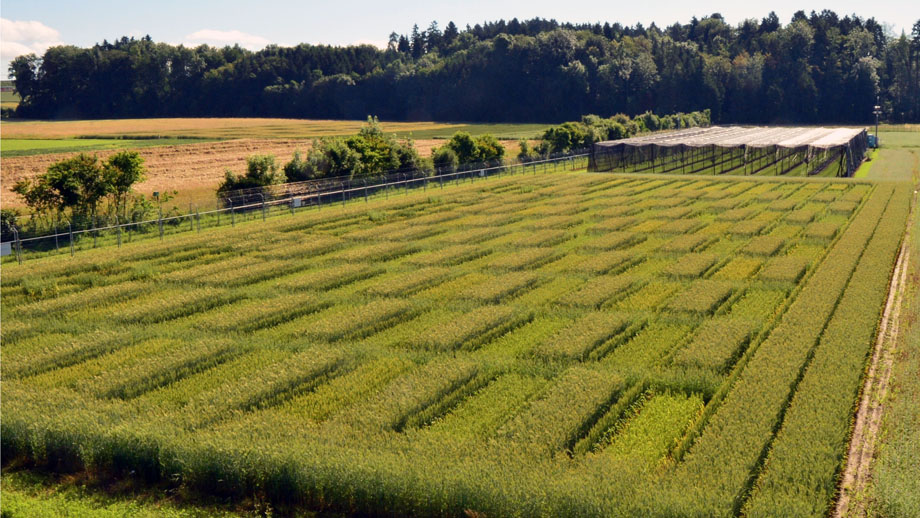Combination of Resistance Genes Offers Better Protection for Wheat against Powdery Mildew
A decent wheat harvest requires robust wheat. However, wheat crops are often infected by fungal diseases such as powdery mildew. For several years now, UZH researchers have been investigating a wheat gene that confers resistance to powdery mildew (Blumeria graminis f. sp. tritici). The gene, called the Pm3 resistance gene, exists in different variations, so called alleles. In previous studies, plant researcher Beat Keller and his team demonstrated that single Pm3 alleles are able to confer resistance against powdery mildew fungi. And yet, a single resistance gene can quickly lose its effectiveness. Thus when it comes to plant breeding, it is important to combine multiple resistance genes. This is exactly what researchers at UZH have now tested in field trials using transgenic wheat lines.
Combination of two Pm3 variations increases powdery mildew resistance
The researchers created new wheat lines by crossbreeding transgenic Pm3 lines (see box). This resulted in four new wheat lines, each containing two different Pm3 gene variations. “These four new wheat lines showed improved resistance against powdery mildew in field trials compared with their parental lines – during the field seasons 2015 to 2017,” explains Teresa Koller, lead author of the study.
No negative effects on wheat yield
Back in the laboratory, the scientists proved that the parental lines’ gene activity is added up in the newly created lines. Each Pm3 allele in the four new lines displayed the same activity as in the parental line, which results in increased overall activity, since it came from two different gene variations. “The improved resistance against powdery mildew is the result of the increased total transgene activity as well as the combination of the two Pm3 gene variations,” summarizes Teresa Koller. The high overall activity of resistance genes did not cause any negative effects for the development of the wheat or its yield.
Application in modern wheat breeding
The findings of these trials improve our general knowledge of the immune system of plants, and in particular of fungal disease resistance of wheat. Besides contributing to fundamental research in the area of plants’ immune systems, the findings can also be applied in wheat breeding. Thanks to the precise testing of Pm3 alleles, the best variations and combinations are identified and can then be used directly in traditional breeding by crossbreeding them into modern wheat varieties.
Literature:
Teresa Koller, Susanne Brunner, Gerhard Herren, Severine Hurni, and Beat Keller. Pyramiding of transgenic Pm3 alleles in wheat results in improved powdery mildew resistance in the field. Theoretical and Applied Genetics. January 11, 2018. DOI: 10.1007/s00122-017-3043-9
